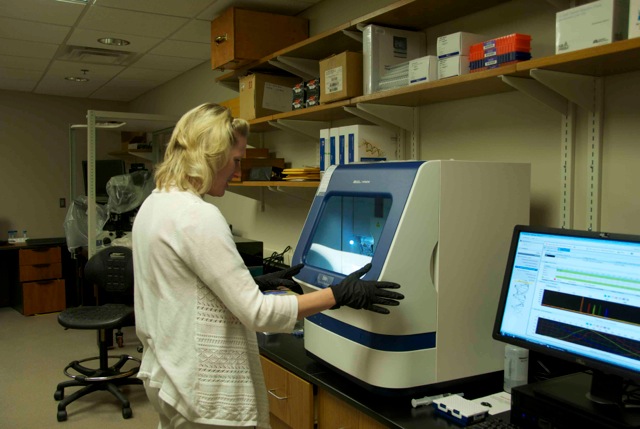

Chelex resins being negatively charged help to remove positive metal ions. Chelex, created by the Bio-Rad company, is a resin that is added to a sample of DNA. This can be achieved through numerous different extraction methods. Several steps need to be taken to isolate DNA from the cells, the cell membrane and nucleus are broken to expose the DNA without destroying it. Cap tubes and centrifuge briefly to collect the contents to the bottom.īefore the amplification of DNA in a thermal cycler, the DNA must be extracted from the collected sample from crime scene. Mix contents of tube and overlay with 50 µl of mineral or silicone oil.ģ. Prepare a master mix for multiple reactions, to minimize reagent loss and to enable accurate pipetting.Ģ. Add the following components to a DNase/RNase-free 0.5-ml microcentrifuge tube placed once. Optimal reaction conditions (primers, MgCl 2, incubation times and temperatures, concentration of Taq DNA Polymerase and template DNA) may differ and need to be calculatedfor the experiment.ġ. The protocol serves as a wide-ranging guideline and a preliminary point for any PCR amplification. This produces approximately one billion copies of the original DNA, sufficient for additional typing. The process continues till 25–40 cycles, which takes nearly 2-3 hours. They again go through annealing and extension, which forms four new double strands. Four single strands are formed after the denaturation of the two strands. The temperature is raised once again to 94☌ and the process repeats in this way. At each of the complementary single strands created by the denaturation process, this process occurs so at the end two identical pieces of double-stranded DNA are produced. Under the influence of Taq polymerase at the temperature of 72☌, single bases/ nucleotides are added to the primer, one by one. The temperature of thermal cycler drops to 60☌ for this step. They mark the starting points for the addition of new bases to start the replication of each strand. In this step, a short strand of synthetic DNA, primer, attaches to each of the separated strands.

Each strand becomes the template for the formation of a new double-stranded DNA. The H-bonds present between the base pairs break and single-stranded DNA is formed. The steps in the PCR reaction are as follows: DenaturationĪfter adding the DNA to the PCR tube containing the reaction mixture it is heated to 95☌ which leads to the denaturation of the double-stranded DNA. The building blocks of DNA, four nucleotides, are added to the buffer along with the Taq polymerase enzyme that helps in catalysing the extension step. The DNA samples are supplemented to a reaction buffer, a salt solution that is buffered at the optimal pH so that the polymerase enzyme can function properly. The three steps of PCR process take place within a thermal cycler, capable of reaching and upholding preset temperatures very accurately. Other components required include a template DNA, a reaction buffer with MgCl 2 to ascertain ideal conditions for the performance of the DNA polymerase enzyme and deoxyribonucleotides to build the DNA molecule. DNA polymerase enzyme adds nucleotides to the 3’ end of the primers and allows the DNA strand to be copied. Fluorescent tags are sometimes added to the primers to locate amplified DNA in electrophoresis. Oligonucleotide primers complementary to the DNA target to mark the target to be amplified, with two primers in use. On this ground, DNA extractions are always performed in a location physically isolated from the desk/lab where the subsequent amplifications would be performed.Ī PCR reaction needs a number of fundamental primary components. PCR methods are very susceptible to contamination by foreign DNA. RFLP typing required relatively large quantities of DNA. PCR solved one of the major struggles facing by forensic biologists. He was awarded the Nobel Prize for his discoveryin 1993.

In 1983, a biochemist, Dr Kary Mullis adopted PCR to amplify DNA fragments of forensic interest in an automated process. In the 1980s, when RFLP was being developed for forensic use, PCR was developed for forensic applications. PCR is particularly helpful in the amplification of small amounts or degraded samples. PCR allows for the exponential amplification of DNA fragments to the lengths of approximately 10,000bp. During the investigation of a crime, the amount of DNA evidence procured is often very small, thus for efficient DNA profiling, amplification is ideal.


 0 kommentar(er)
0 kommentar(er)
